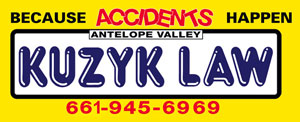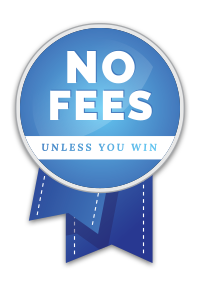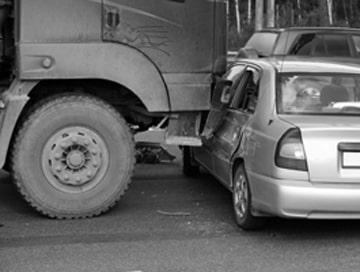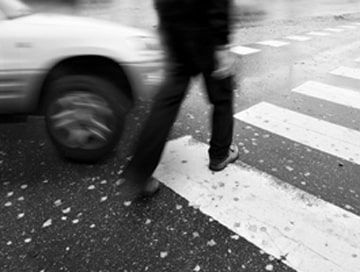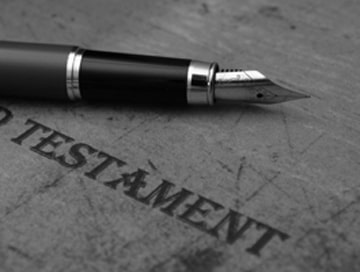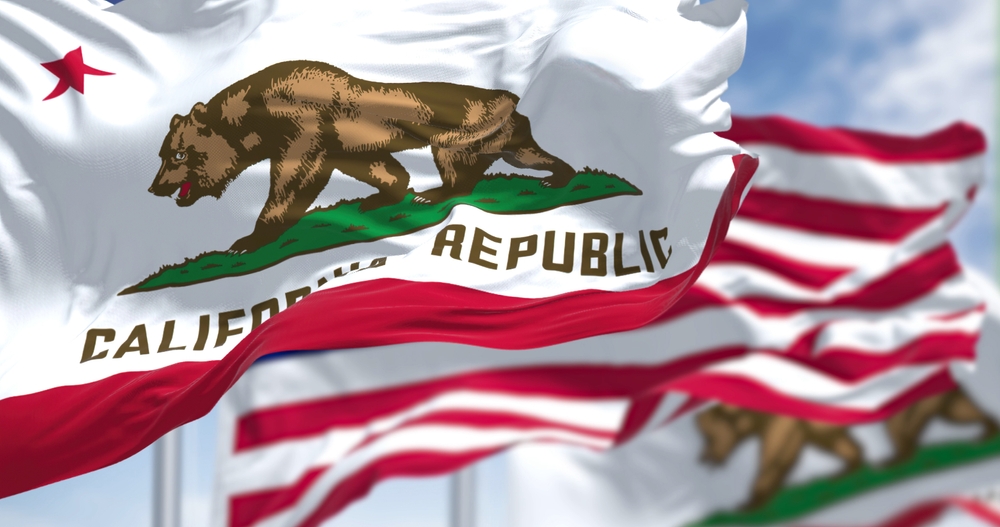
Auto insurance systems in the U.S. fall into two broad types. A minority of states have a no-fault insurance system. But is California a no-fault state? No. California, like the majority of states, is a fault state. As a result, the financial liability for a car accident in California falls on the person who bears the fault for the crash.
Things happen differently in no-fault states. In these states, vehicle owners buy auto insurance. Insurance companies pay the losses incurred by anyone in the owner’s vehicle regardless of fault, including the driver who caused the crash. But the tradeoff is that accident victims lose the right to sue the at-fault driver except in narrow situations.
How No-Fault Systems Work
It is helpful to explain what no-fault insurance is before answering the question, “Is California a no-fault state?” No-fault insurance was invented in the 1930s. The creators based it on workers’ compensation, another form of no-fault insurance. Under both systems, insurers pay benefits to accident victims regardless of fault.
In theory, this system provides several benefits, such as the following:
- Insurers pay claims faster because they do not investigate fault
- Everyone receives medical benefits, including the driver who caused the crash
- Insurance premiums go down because insurers avoid court costs
Twelve states have a fully-fledged no-fault system that includes a limit on the right to sue. These states include New York, Florida, and Massachusetts. Several other states, like Pennsylvania and New Jersey, allow vehicle owners to choose between limited or unlimited rights to sue. In total, 24 states plus Washington D.C. offer a form of no-fault insurance.
MedPay Coverage in California
Is California no-fault state insurance available? No. In California, no-fault state auto insurance is not sold by insurance companies. In other words, your insurer will not sell you a no-fault insurance policy even if you want it. The no-fault system only works when everyone has the same coverage.
However, insurers make available a similar type of optional coverage in the state. You can add medical payments (MedPay) coverage to your California auto insurance policy. Under this coverage, your insurer will pay the medical bills for auto crash-related injuries up to the policy limits.
MedPay differs from no-fault insurance in a few important ways. First, no-fault insurance pays all your economic losses, including medical costs, income losses, and out-of-pocket expenses. MedPay only pays medical bills.
Second, pure no-fault insurance comes with a limit on your right to sue. You retain your right to sue if you add MedPay coverage to your auto insurance policy.
Third, no-fault systems block your right to pursue pain and suffering damages except in narrow situations. MedPay does not affect pain and suffering damages at all.
Thus, adding MedPay coverage to your insurance policy will not convert you to no-fault insurance. The answer to the question, “Is CA a no-fault state?” is no — even if you buy optional MedPay coverage.
California At-Fault Accident System
The law allows people to pursue legal claims against those who injure them through negligent or intentional actions. For example, if someone deliberately throws a drinking glass at you during a fight, they bear the liability for your injuries. Similarly, a construction company that negligently secures the load on a crane bears the liability if that load falls and crushes bystanders.
These same principles apply to car accidents. When a driver negligently or intentionally hits another vehicle, the occupants of that vehicle have a legal claim against the driver. In this respect, California’s at-fault or fault-based system for car accidents matches the laws that govern other types of accidents. The at-fault party bears the liability whether they hit you with a car or a drinking glass.
Liability Insurance Requirements
Is California an at-fault state? Yes. The difference between car accidents and other types of incidents is the legal requirement to buy auto liability insurance. This distinction is important to your legal options. People who drink in bars usually do not have bar fight liability insurance to cover anyone they injure. But California vehicle owners are required, by law, to carry auto liability insurance to cover third-party accident victims.
California insurance laws require vehicle owners to carry the following coverage:
- $15,000 in bodily injury liability (BIL) per person up to $30,000 per crash
- $5,000 in property damage liability (PDL) per crash
- Uninsured motorist (UM) with the same limits as the BIL coverage
Unlike no-fault insurance, BIL does not pay the driver of the insured vehicle. Instead, it only pays third parties injured by them. These parties can include passengers, occupants of other vehicles, pedestrians, and cyclists.
After a crash, almost all accident cases begin with an insurance claim. All of the accident victims file claims against the at-fault driver. The burden falls on each of the claimants to prove the driver’s fault.
Proving Fault Under California Car Accident Laws
In a no-fault state, you can file an insurance claim for any and all accidents. Under California law, car accidents are not always grounds for a legal claim. Instead, you must prove the other driver intentionally or negligently caused the accident.
Liability insurance usually only covers negligence. When drivers intentionally cause crashes, their insurers will deny coverage. For example, when a driver deliberately bumps your vehicle during a fit of road rage, their BIL coverage will probably not cover your injuries.
Instead, you must prove negligence to recover compensation under the at-fault driver’s BIL coverage. Under California accident fault laws, negligence requires proof of the following four elements:
Duty of Care
All California drivers owe a legal duty to other road users. This duty requires them to exercise reasonable care for the safety of others. The law expects drivers to obey traffic laws and follow customary practices.
Breach of Duty
Drivers breach this duty when they drive in a way that an objectively reasonable person would know to be dangerous. In other words, the driver does not need to know their driving is unreasonably bad. Instead, the law only requires accident victims to prove that an objective driver in the same situation would have known the danger created.
Some common breaches include:
- Disobeying red lights and stop signs
- Driving while intoxicated
- Using a handheld cell phone while driving
- Failing to yield the right-of-way
Breaches can also include actions that pose a danger to other road users despite being legal. Thus, a driver may breach their duty of care by eating while driving, even though California has no traffic law outlawing this action.
Damages
When you suffer an injury in a car accident, you will have both economic and non-economic damages. These damages cover the range of losses you suffer in both your finances and quality of life. If you settle your claim or a court delivers a verdict in your favor, this is the money you will receive.
Causation
Your car accident lawyer must prove a causal link between the other party’s breach of duty and your damages. This causal link includes two parts. First, your injuries must flow naturally and logically from the other driver’s actions. Lawyers refer to this link as “cause in fact.”
Second, an injury must be foreseeable in view of the other party’s act. This type of causation, called proximate cause, is meant to insulate someone from being liable for injuries when their actions were not likely to cause injury. With proximate cause, you are not required to prove the other party foresaw your exact injury. Instead, you must prove that the driver’s actions were the type of action that could injure someone.
Damages Recoverable for an At-Fault Accident in California
One of the primary differences between no-fault and at-fault insurance systems is the damages recoverable. In a no-fault system, you get paid by your auto insurer based on the losses you incurred due to your injuries. This system pays for economic losses, including:
- Past and future costs for medical treatment and therapy
- Income losses due to missing work
- Diminished earning capacity resulting from long-term or permanent disabilities
However, no-fault systems limit accident victims’ right to pursue non-economic damages. These damages encompass the impact of the injuries on the accident victim’s quality of life. You may see these damages abbreviated as “pain and suffering” because that phrase covers two of the most common types of non-economic damages.
If California were a no-fault system, your right to recover these damages might depend on:
- Your injuries, as in New York and Florida
- An election made when you bought your policy, as in Pennsylvania
- An election filed with the state, as in Kentucky
But since California is an at-fault state, you always have the right to pursue non-economic damages from the at-fault driver and their insurer. You prove these damages with evidence showing the severity and duration of your injuries. Some examples of non-economic losses include:
- Physical pain
- Mental suffering
- Emotional distress
- Dismemberment, for losing a body part
- Disfigurement, for injuries that alter your appearance, such as scars and burns
- Disability, for activities you cannot perform temporarily or permanently
Under California law, the insurance adjuster or jury must award a fair amount based on evidence and “common sense.” The evidence often includes testimony from you and your doctor describing the effects of your injuries and how long they may last. Permanent injuries often receive more than temporary injuries. Severe injuries often get awarded more than minor injuries.
At-Fault Accident Claim Process
After a crash in a no-fault state, each injured person files a no-fault claim with their auto insurer. Drivers of borrowed vehicles file with the insurer for the vehicle they were driving. Passengers file with the insurer for the vehicle in which they were riding.
Pedestrians and cyclists who own vehicles can file no-fault claims with their auto insurer. In other words, policyholders do not need to be in a motor vehicle during their accident to get no-fault benefits. They can also file with the insurer of the vehicle that hit them.
The only vehicles that fall outside of this process in no-fault states are motorcycles and commercial trucks. Motorcycles have too much risk for states to include them in their no-fault systems. Commercial motor vehicles, like semi-trucks and buses, fall under federal law. As a result, accident victims need to deal with the fault-based system in no-fault states after motorcycle and truck accidents.
When injured people file no-fault claims, the insurer assigns a claims adjuster to the case. The adjuster verifies the accident happened and that the injuries resulted from it.
In California, the claims process is handled differently. The adjuster must investigate the cause of the crash. The insurer can deny the claim if the adjuster determines the policyholder did not cause the crash or was not negligent in causing it. Also, the adjuster has a financial incentive to deny claims and will look for a reason to do so.
A lawyer can play a critical role in this process. An experienced injury law firm can overcome claim denials and negotiate a fair settlement. If the insurer refuses to settle, an injury lawyer will explain your options for pursuing a lawsuit against the at-fault party.
Resolving Your California At-Fault Injury Claim
Is California an at-fault state? Yes. While California drivers do not have the protections afforded by no-fault states, they are also free of the restrictions that come along with them. Since California is an at-fault state, anyone injured in a crash can pursue claims against the at-fault driver for their full losses, including any pain and suffering they experienced.
A car accident can affect you physically, emotionally, and financially. Contact us to discuss your car accident and how we can fight the at-fault driver and their insurer for fair injury compensation.
